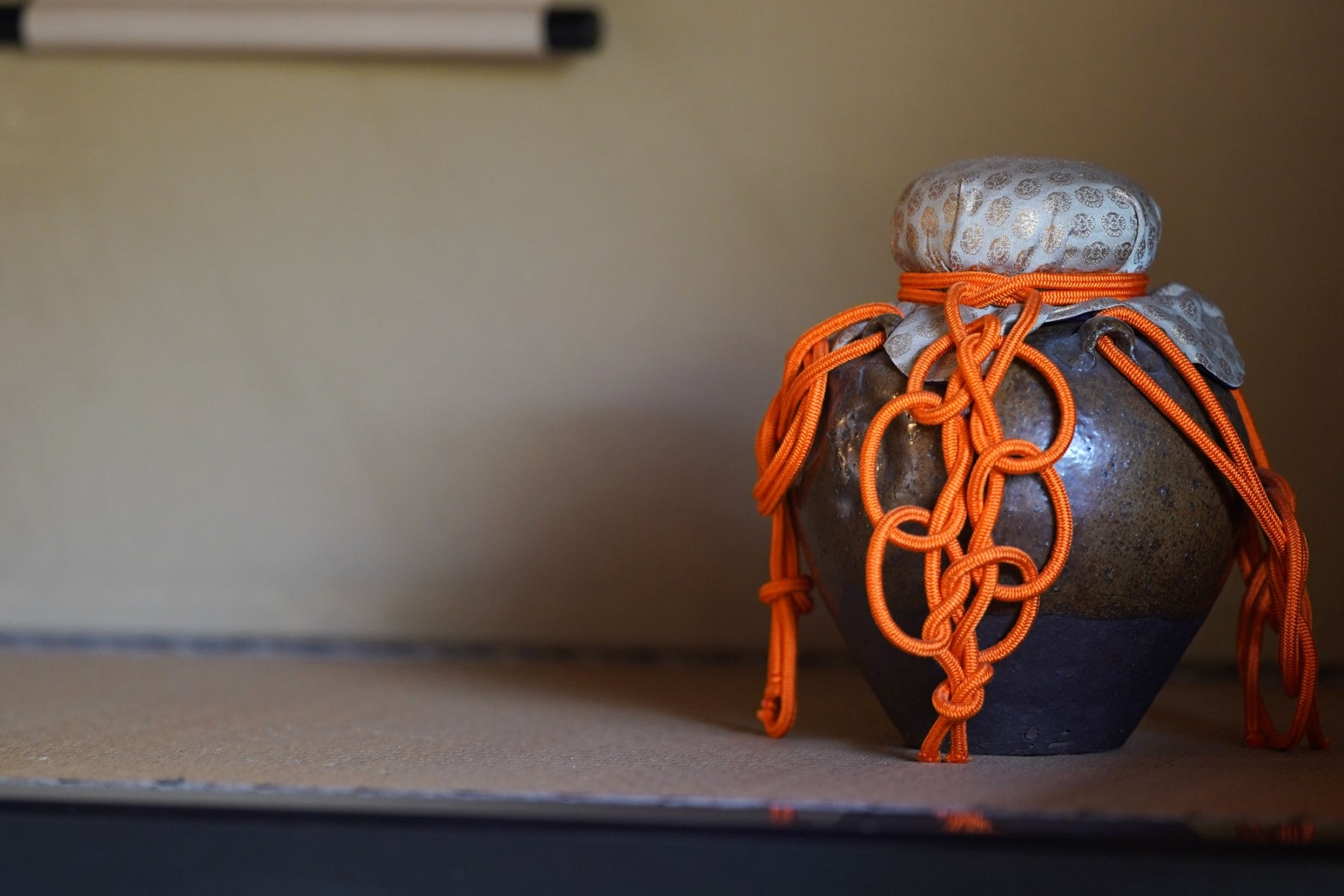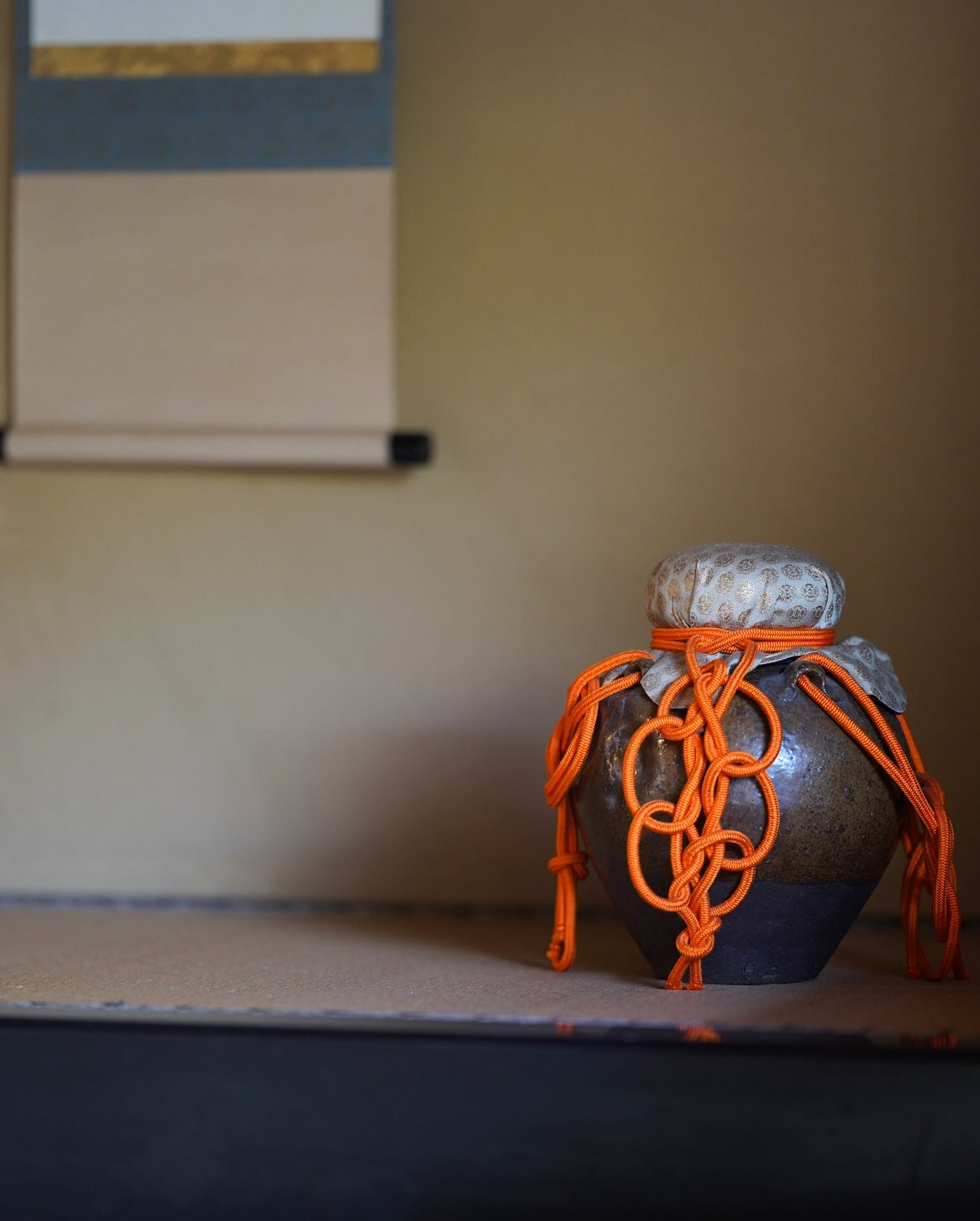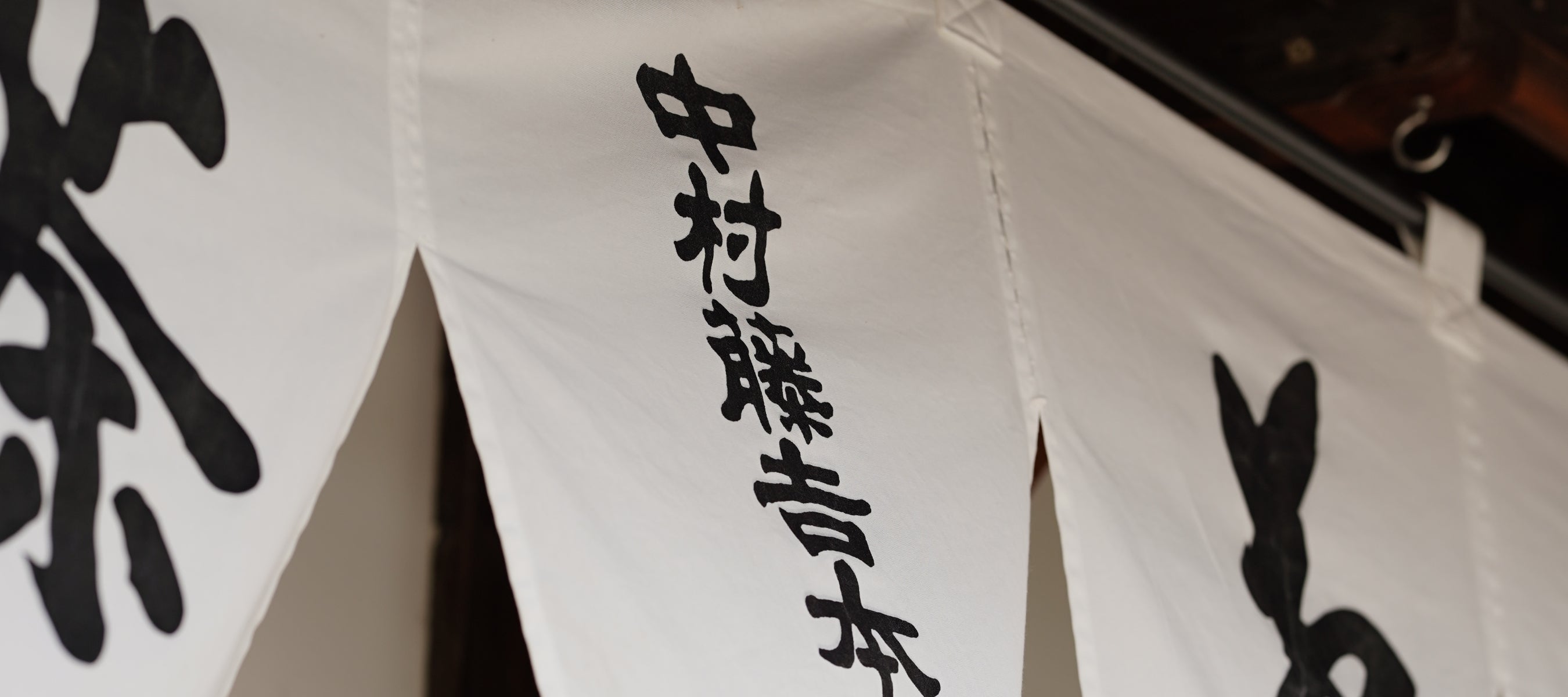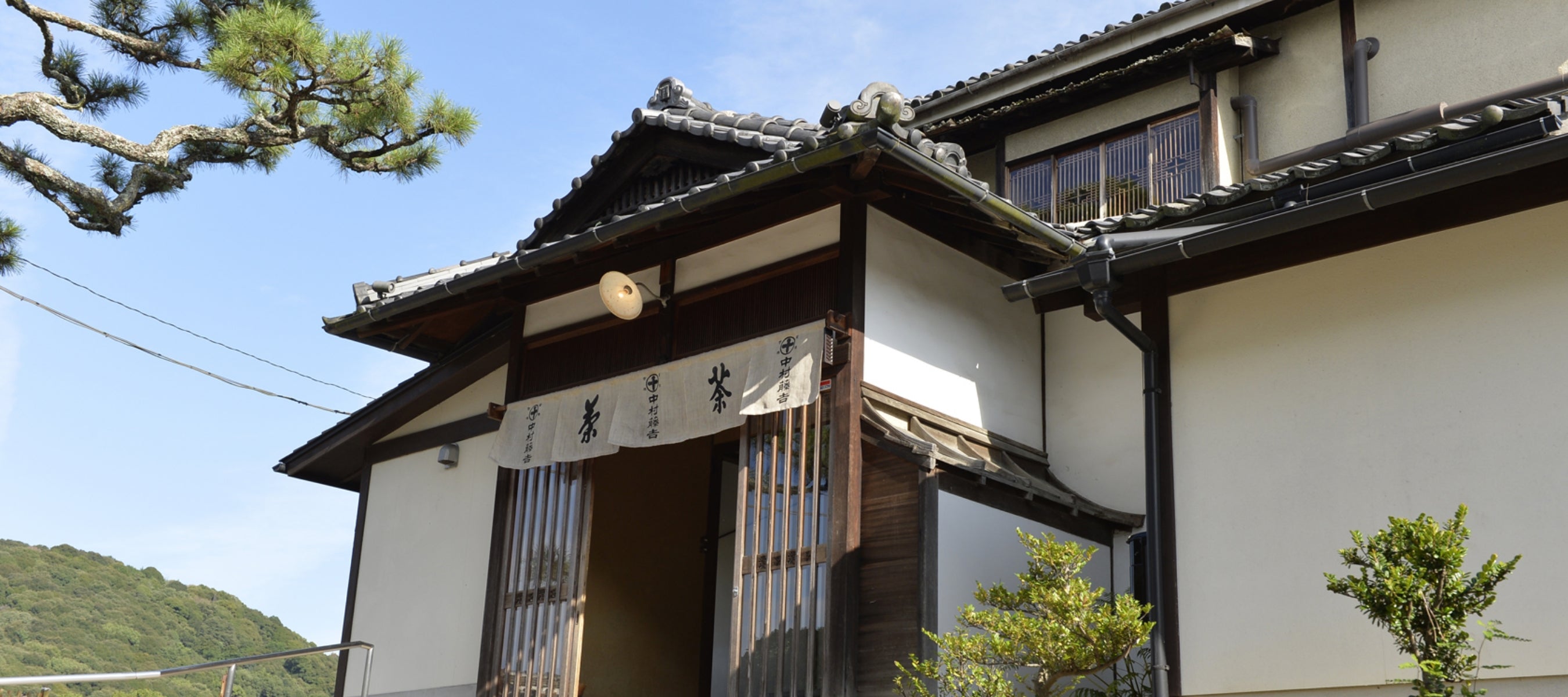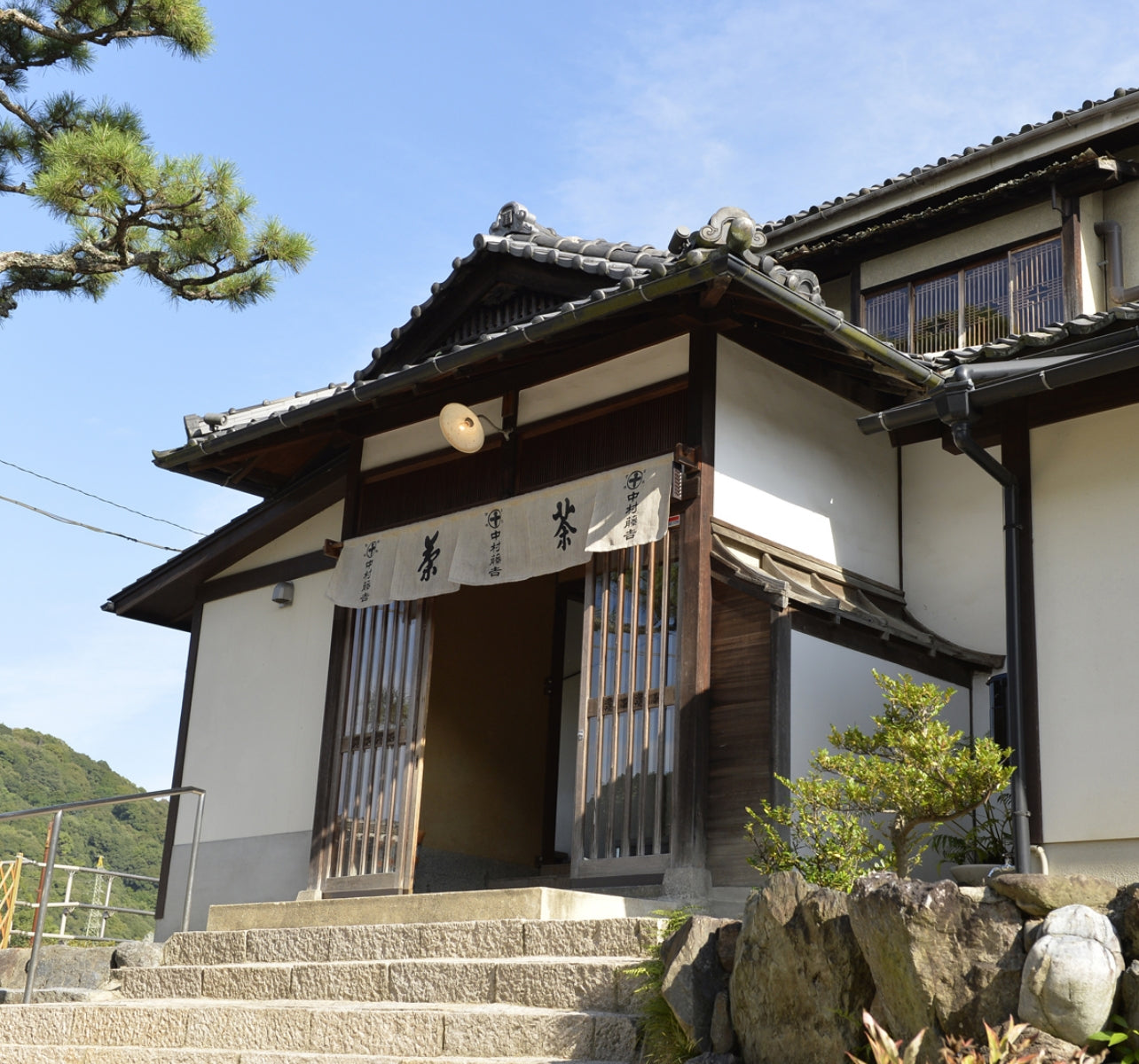Konakamura Tokichi changes his name to Nakamura Tokichi I (after calling himself as Maruya Tokichi for two years), and establishes the tea firm, ‘Nakamura Tokichi’ (trade name:  Maruto) in the premises of the current Honten (Main Store) on New Year’s Day?a day of good fortune.
Maruto) in the premises of the current Honten (Main Store) on New Year’s Day?a day of good fortune.
the history of the brand extends back to 1819 (Bunsei 2), when the parents of NAKAMURA Tokichi the first met each other.
Rokubei, the father of the first Nakamura Tokichi, was born the son of Kyubei, a sheet metal worker from Fushimi, but was adopted by a thatched-roof craftsman named KONAKAMURA Rokuemon at an early stage in life and took to the profession of his adoptive father.
In 1819, he married Tosa, the daughter of YAMAMOTO Bun'emon, a farmer from Makishima in Uji. They had five children?two daughters and three sons?including his first daughter Tsuru. His fourth child (second son) was named Tokichi. He is the son who grew up to establish a tea business with the name, Nakamura Tokichi.

About Nakamura Tokichi
10 Nov. 1832 (Tempo 3)
Nakamura Tokichi was born the fourth child of Konakamura Rokubei and Nakamura Tosa.Approx. 1842 (Tempo 13)
Tokichi starts training as an apprentice of Hoshino Soi.Approx. 1845 (Tempo 16)
Tokichi becomes an assistant manager at a young age.1 Jan. 1854 (Ansei 1)
Tokichi establishes the tea firm, Nakamura Tokichi.8 Jun. 1896 (Meiji 29)
Tokichi passes away.
inspire

1854ansei 1
Founded Nakamura Tokichi

1870meiji 3
Opened Yonago branch and Matsue branch in San'in region
 meiji-taisho era manufacturing scene
meiji-taisho era manufacturing scene

1895meiji 28
Received numerous honorary gold, silver and bronze medals
The firm receives the First Prize at the 4th National Industrial Fair in addition to many honorable gold, silver and bronze medals at various local fairs and exhibitions.

1912taisho 1
Nakamura Tokichi III (Ukichi) becomes the Mayor of Uji Town.

1913taisho 2
The firm succeeds in the motorization of tea mills.
The firm succeeds in the motorization of tea mills. The machine was registered as the Nakamura-style tea grinder with Patent No. 25028 (the original model of the current machine) on November 29.
 registered exclusive patent no.25028 nakamura-style ground tea machine
registered exclusive patent no.25028 nakamura-style ground tea machine

1915taisho 4
The firm contributed tea to the Coronation of Emperor Taisho.
 taisho era packing scenery
taisho era packing scenery

1928showa 3
The firm presented koicha (thick tea) ‘Chiyo Mukashi,’ to the Coronation of Emperor Showa and received the honor of being a purveyor to the Emperial family.
 showa Era Scene of collecting tea presented to His Majesty Emperor Showa
showa Era Scene of collecting tea presented to His Majesty Emperor Showa
1939showa 14
The selected plants became a variety for gyokuro, called “Kyo Midori” and a sencha/gyokuro variety, called “Uji Hikari” respectively by the current Kyoto Prefectural Tea Industry Research Division.
Kyoto Prefecture selected 106 tea plants amongst which two of our 100-year-old trees were chosen for selective cultivation of elite trees to be processed as gyokuro, tencha, or sencha as prefectural specialties. The selected plants became a variety for gyokuro, called “Kyo Midori” and a sencha/gyokuro variety, called “Uji Hikari” respectively by the current Kyoto Prefectural Tea Industry Research Division.
1949showa 24
The firm reorganizes itself as a company and changed its name to Nakamura Tokichi Honten Inc.

1951showa 26
At the 1st Uji Tea Festival, the firms' usucha (thin tea) and koicha (thick tea) were granted the tea names of ‘Ukishima no Shiro’ and ‘Sono no Mukashi’ respectively by Grand Master Tantansai of the Urasenke school.

1980showa 55
The firms' usucha and koicha are granted the tea names ‘Fuji no Shiro’ and ‘Sho no Mukashi’ respectively by Grand Master Hounsai of the Urasenke school.

‘Zuisho-an,’ a Genroku-era tearoom, purchased by Tokichi I from a tea master residing in a branch of Mimurodo-ji Temple, and moved to the courtyard of the Main Store, was dismantled and repaired.

1994heisei 6
in commemoration of the 1200-year anniversary of the Heian capital foundation, our secret house blend, ‘Nakamura-cha,’ is sold for the first time.

1998heisei 10
After many years of trial and error, the firm starts sale of it's matcha flavored ice cream assortment ‘Uji Kin Soft’ which is macha-flavored soft cream in a waffle cone, topped with azuki beans and rice flour dumplings to be eaten with a spoon.

Our matcha-flavoured Ganache named “Chacolate” is sold for the first time.
It is received favorably by TV, magazines and newspapers.
2001heisei 13
The ‘Cafe’-area with open terrace, where customers can enjoy Uji Tea and sweets, opens on June 1st.
The ‘Cafe’-area with open terrace, where customers can enjoy Uji Tea and sweets, opens on June 1st, using our tea factory from the Meiji and Taisho eras which was renovated in a modern style without changing the structure of the original building including pillars and beams. It garned good reviews from the first year.
 Uji Main Store Namacha Jelly
Uji Main Store Namacha Jelly
2003heisei 16
In May, the shipment of ‘Nama-cha Jelly/ Macha’ starts for consumers nationwide and earns a good reputation.

2006heisei 18
‘Nakamura Tokichi Byodo-in Store’ opens by utilizing the remodeled Japanese inn‘Kikuya Manpekiro,’ located on the Uji River bank close to the World Heritage Site, ‘Byodo-in.’
On April 1st, ‘Nakamura Tokichi Byodo-in Store’ opens by utilizing the remodeled Japanese inn‘Kikuya Manpekiro,’ located on the Uji River bank close to the World Heritage Site, ‘Byodo-in.’ The inn was patronized by many writers, artists and government/business leaders and the renovation was conducted without changing the outer appearance, named ‘Geikakuro’ by Japan’s first Prime Minister ITO Hirobumi. Only the interior was renovated in a modern style.
 Inside the Former Byodo-in store
Inside the Former Byodo-in store

2008heisei 20
On February 13, the ‘Nakamura Tokichi Kyoto Station Store’ opens on the third floor of Suvaco JR Kyoto Isetan.
2009heisei 21
‘Nakamura Tokichi Honten (Main Store)’ and ‘Nakamura Tokichi Byodo-in Store (ex-Kikuya Manpekiro)’ are selected as important cultural landscapes of Uji City.

2012heisei 24
On October 25th, ‘Nakamura Tokichi Osaka Store’ opens on the B1 floor of Hankyu Umeda Main Store
2013heisei 25
The new main factory was completed. We moved the headquarters operations and manufacturing/logistics functions to the factory.

2014heisei 26
As part of the preservation activities of important cultural landscapes, the Main Store and tea-firing furnace, which were built in 1896 (Meiji 29), begin renovation.
completed in April 2014.
 examination room
examination room

2017heisei 29
On April 20th, on the 4th floor of GINZA SIX Opened "Nakamura Tokichi Ginza"
The Taisho-era garden on the premises of the head office is designated as a cultural asset by Kyoto Prefecture.
2018heisei 30
On November 28th, "JR Kyoto Isetan" opened on the first basement floor of JR Kyoto Isetan.

2021reiwa 3
On January 21st, the Uji main store's cafe was reopened after a 20-year hiatus.
On June 18th, "Nakamura Tokichi Daimaru Kyoto" opened in the food floor "Gochiso Paradise" on the first basement floor of Daimaru Kyoto.

2022reiwa 4
On September 16th, the Byodo-in store underwent the first large-scale renovation since its opening in 2006, and reopened as a self-service cafe.
Important Cultural Landscape
The term "Cultural Landscape" refers to a cultural scenery, formed slowly over time through the lives and livelihood or nature and climate of the people.
“Cultural Landscapes” are established by international criteria, adopted into the World Heritage Convention of UNESCO.
In Japan, with the revision of the Cultural Assets Preservation Act in 2004, they came to be regarded as new cultural properties whereupon a system was consolidated in which the Minister of Education, Culture, Sports, Science and Technology selects especially important landscapes as “important cultural landscapes.” In short, “Cultural landscapes” are important cultural properties created by natural features.
In February 2009, some “cultural landscapes of Uji” were selected as important cultural landscapes, including [Nakamura Tokichi Honten]… as representative buildings of tea firm premises in the Meiji era and [Nakamura Tokichi Byodo-in Store (ex-Kikuya Manpekiro)]… as remaining buildings of Kikuya, a representative restaurant/inn in Uji from the Edo era.

